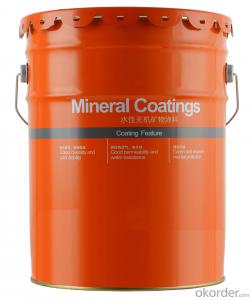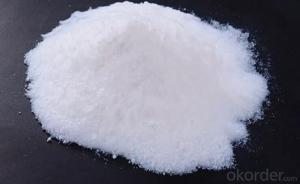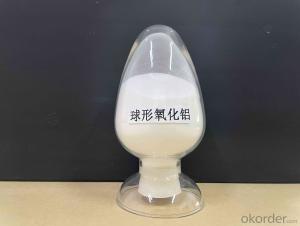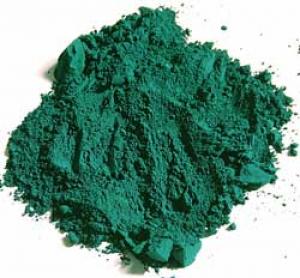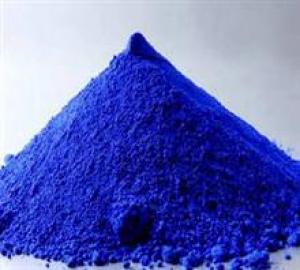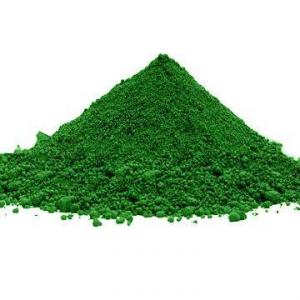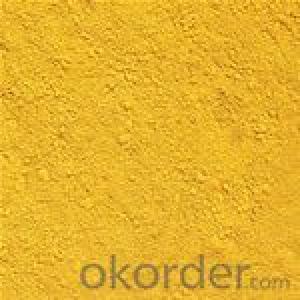Lithopone 28-30% Lithopone B301 Lithopone B311 with lowest price
- Loading Port:
- Tianjin
- Payment Terms:
- TT OR LC
- Min Order Qty:
- 20 m.t.
- Supply Capability:
- 2000 m.t./month
OKorder Service Pledge
OKorder Financial Service
You Might Also Like
Specifications of Lithopone
Lithopone ZnS-BaSO4
1. zinc: 28-30%,30%
2. Uses:paints,printing inks,coating,paper pigment,plastic
3. ISO,SGS
4. 25kg/bag
Lithopone ZnS-BaSO4 :
1. Commodity:
Lithopone (ZnS-BaSO4) for paint ink plastic paper etc
--------------------------------------------------------------------------------------------------------------
2. Description:
Lithopone B301 is a kind of lithopone whose hiding power is better than that of zinc oxide and worse than that of titanium dioxide.It has good heat-resisitance and is insoluble in water.
White powder, is a mixture of zinc sulfide and barium sulfate. Have high whiteness and good covering power. It is called Inorganic white pigment. Widely used as white pigment of plastics such as polyolefin, vinyl resin, ABS resin, polystyrene, polycarbonate, nylon and polyoxymethylene (POM), also for paint and ink . it is use to colourate for rubber products , linoleum, leather, paper, enamel.
-----------------------------------------------------------------------------------------------------------------
3. Features:
1) A white pigment produced by precipitation through filtering,
heating and quenching works
2) Has mostly been replaced by titanium dioxide which is more
durable, but it is much cheaper
---------------------------------------------------------------------------------------------------------------
4. Application:
Mainly used of coatings, printing ink, rubber, plastic, powder, profiles, paint, paper, and leather, etc.
1) Used as a base for lake pigment
2) Used as a inert pigment for paint, ink and cosmetics
3) A large range of applications in plastic industry
4) Used as a filler in paper, leather, and linoleum
---------------------------------------------------------------------------------------------------------------
5. Packaging:
Packing:25kgs per bag or according customer's requirements.
--------------------------------------------------------------------------------------------------------------
6. Specifications:
| ITEM | SPECIFICATIONS |
Zinc oxide,% | ≤0.60 |
Total zinc(on zinc sulfide basis),% | ≥28 |
Quality standard | GBT1707-95 |
Tinting strength(Relative) | ≥105 |
Total zinc sulfide and barium sulfate | ≥99.0 |
Water soluble % | ≤0.40 |
Oil absorption,g/100g, | ≤14.0 |
Sieve residue 45um % | ≤0.10 |
Volatile at 105°C g/100g | ≤0.30 |
Color | Not lower than standard sample |
| Hiding Power(contrast ratio) | Not lower than 5% of standard sample |
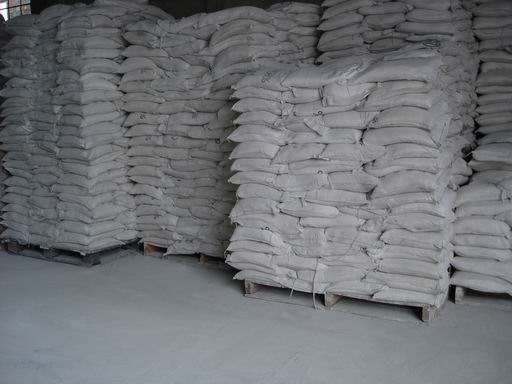
- Q:We see pigments everywhere in products. They make a variety of things we see today. Where does it come from? Do they actually take a red rose pedal, grind the color and designate it as the color red?
- Basically, it's an aqueous solution with an affinity to a specific substrate. Usually requires a mordant (a binding agent for specific fibers, usually a polyvalent metal ion). Dyes appear to be colored because they absorb some wavelengths of light more than others. In contrast with a dye, a pigment generally is insoluble, and has no affinity for the substrate. Some dyes can be precipitated with an inert salt to produce a lake pigment, and based on the salt used they could be aluminum lake, calcium lake or barium lake pigments. Natural dyes include things like; berries, roots, berries, bark, leaves, and wood, fungi, and lichens. There are also synthetic dyes the most famous (and the first made) being mauveine. Doing a simple Google search would bring up some different synthetic dyes, as well as the different types! (Too many to type here :-)) Hope that helped!
- Q:I am about to purchase a bunch of MAC pigments and I have noticed that they all look glittery, is this just the kind that i am looking at? I know they are versatile, so that is why i want to buy them. And it seems as though they will last longert than eyeshadow...
- Of course they can ! I love mac pigments. Yes, fallout is involved..but what i do is i use my mixing medium with them so that they go on wet and no fallout. If you don't have mixing medium you can mix them with eyedrops. What i do is i put a drop in the lid and pick up some pigment and mix it till i get the perfect consistancy. You can also learn how to press them, so that they can become pressed eyeshadows instead of loose. But if you just want to use them loose, make sure you get a good flat shader brush...make sure you pat the pigment on your lids insted of in a swiping motion, this also prevents less fall out. Get some loose transparent powder as well set that under your eyes, and swipe it off when done..this makes the fallout swipe away without smearing on your face.. Hope that helps ! If you want you can do all of this, but you don't have to...just random tips to prevent that annoying fallout
- Q:what pigment are? give two example
- i need example sentences of pigment.. Thanks.. :)
- Q:what are the accessory pigments in plant photosynthesis?
- This Site Might Help You. RE: what are the accessory pigments in plant photosynthesis?
- Q:Many of the microorganisms found on environmental surfaces are pigmented. Of what possible advantage is the pigment?
- So they can absorb different light frequencies to use for energy (from photosynthesis). Light travels in water according to the frequency (wavelength). So different pigmented organisms are able to exist in different environments, possibly reducing competition with other forms.
- Q:Are carontenoids and anythocyanin accesory pigments.
- Accessory pigments are those , that can not do photosynthesis and manufacture sugar as essential pigment chlorophyll does. But these accessory pigments capture solar energy in the form of photons and then transfer it to chlorophyll molecules / pigments . Thus increasing the power of chlorophyll to do photosynthesis . carontenoids and anythocyanin are accesory pigments. click on the links below to learn more about the accessory pigments - en.wikipedia.org/wiki/Accessory_p... www.ucmp.berkeley.edu/glossary/gl... www.cas.muohio.edu/~meicenrd/BMZ1... Thank you !
- Q:what is one reason why plants have accessory pigment molecules like chlorophyll b and carotenoids?
- Chlorophyll actually speaking does'nt give the green color to the plant.It reflects the green wavelength and hence the green color.There are other pigments present in the leaf like chlorophyll a , chlorophyll b,c,d and e.Chlorophyll a is the primary pigment.It reflects the green,red and blue wavelength.It consitutes the reaction center in the chloroplasts which absorbs all the light incident on the leaf which in turn facilitates photosynthesis.Then there is Xanthophyll and carotene.Xanthophyll is orange yellow in color.Carotene is orange in color.Xanthophyll and Carotene are called as the accessory pigments present in the leaf.They reflect the blue, red and violet wavelength.I hope this info is sufficient.
- Q:Can somebody answer this in AP BIO language please
- A pigment molecule absorbs at specific wavelength(s), meaning that when light of a specific wavelength is incident to the molecule only certain wavelengths are absorbed while others are transmitted. The spectrophotometer emits monochromatic light (light of only one wavelength) which passes through the pigment molecule and a detector determines the amount of light that is either absorbed or transmitted by the sample. This is done at wavelengths from the UV (180-330 nm) to the visible (330-700 nm) and the light that is either transmitted or absorbed is detected by the spectrophotometer and is able to be graphed with absorbance representing the y-axis and wavelength representing the x-axis. The resultant graph will depict the absorption spectrum of that particular pigment molecule. Hope that helps.
- Q:what is pigment?
- Pigment is a substance that can be found in plants and animals that has the property of absorbing light and to reflex it
1. Manufacturer Overview |
|
|---|---|
| Location | |
| Year Established | |
| Annual Output Value | |
| Main Markets | |
| Company Certifications | |
2. Manufacturer Certificates |
|
|---|---|
| a) Certification Name | |
| Range | |
| Reference | |
| Validity Period | |
3. Manufacturer Capability |
|
|---|---|
| a)Trade Capacity | |
| Nearest Port | |
| Export Percentage | |
| No.of Employees in Trade Department | |
| Language Spoken: | |
| b)Factory Information | |
| Factory Size: | |
| No. of Production Lines | |
| Contract Manufacturing | |
| Product Price Range | |
Send your message to us
Lithopone 28-30% Lithopone B301 Lithopone B311 with lowest price
- Loading Port:
- Tianjin
- Payment Terms:
- TT OR LC
- Min Order Qty:
- 20 m.t.
- Supply Capability:
- 2000 m.t./month
OKorder Service Pledge
OKorder Financial Service
Similar products
New products
Hot products
Hot Searches
Related keywords

















